Not So Pretty is a HBO documentary series about supposedly dangerous beauty products. It’s a very persuasive, slick-looking documentary. A lot of people chucked out their products after watching it, and as someone who breaks open bottles to use the last three drops at the bottom, this cut me deep.
As a scientist who uses a lot of beauty products and cares about her health, I’ve gone through the research on a lot of the ingredients that these sorts of clean beauty documentaries talk about, which is why I know they usually talk about them in misleading ways. So today we’re talking about Episode 2 of Not So Pretty, which is about Nails… and what they got wrong about toxic ingredients in nail products.
Last time I talked about Episode 1, Makeup, which was about asbestos in talc – click here to read about that.
If you want to watch the video version of this breakdown of Episode 2, check it out here.
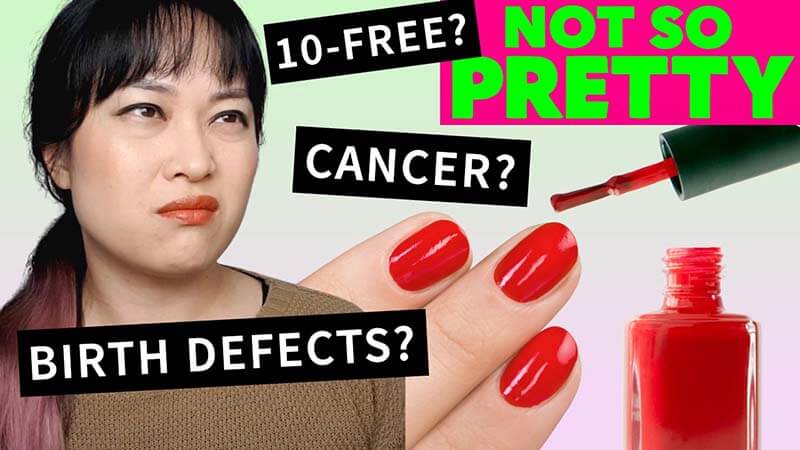
Episode 2: Nails
Episode 2 focuses on health problems in nail salon workers, a lot of whom are Vietnamese immigrants.
Different women: People had tremendous respiratory-health issues. Miscarriages and pregnancy complications. The skin coming off. And breast cancer.
The documentary makers talk to people working in the nail industry and researchers studying health problems in salon workers. They discuss how activists have tried to improve the situation, and what they recommend consumers do.
I have less issues with this episode than Episode 1. I still have issues, because it does use a lot of the same, not-entirely-transparent techniques.
Selective Use of Evidence
Documentaries aren’t science, and to me, this is very much a problem with Not So Pretty.
Documentaries don’t need to carefully go through all the data, or try to be objective. They just need to tell a good story, and a lot of the time, science is… not that.
Science doesn’t usually have easy, clearcut answers. It’s a gradual process of building evidence, and there are very few exciting bombshells.
So documentaries end up doing a lot of cherry picking. They carefully choose little bits of data to build a good story, which doesn’t necessarily match what the science actually says.
This Nail Episode of Not So Pretty is one of the better ones, probably because they actually got relevant experts this time. But they do still distort the issues, and pull out some pretty questionable conclusions about what the risks are, and what consumers should be doing to reduce them.
Less Privileged Groups Are Less Researched
First off, they mention a great point: less privileged groups tend to have less scientific research done on them.
Thu: Nothing had been done to understand what the exposures and health impacts are for the workers.
Lupita: People who work in industries like nail salons are poor people, people of color, many immigrants. The majority are women, and so they tend to get less attention from scientists.
This is a huge problem in science that’s been widely recognised for a long time. Studies are done a lot more on white cis men, for a bunch of reasons, not just sexism or racism (although there’s a lot of that too).
Just one example: if there’s any chance someone in your experiment could be pregnant, you have to thoroughly check they’re not, because harming an unborn child for science is a really bad look. So logistically, it’s easier and cheaper to study subjects without this extra complexity.
The problem is: what happens in white cis men isn’t always the same as what happens in everyone else, and that means you often end up with worse treatments and outcomes for other groups, because of that lack of information.
Sometimes healthcare providers will even dismiss health problems as “all in your head” because that health problem just hasn’t been researched enough, so there’s no official evidence it’s an issue. There are lots of efforts to try to fix these imbalances, but it’s a very long process.
And this whole mess is partly why the Clean Beauty narrative that “beauty products caused your health problems” is so effective for women and people of colour.
Esther Olu: [The way] black people and people of color are treated when they do try to seek treatment – they don’t get taken seriously. So I think it leads us to try to seek an answer, try to find our own answers, which is not really a solution in my opinion. And it’s really sad when people see documentaries like this, they think they’ve finally found an answer, this is giving us the answers that we’ve been looking for all the time… they don’t consider the other factors.
Are there more health problems in salon workers?
This episode features Dr Thu Quach, an epidemiologist who started researching health problems in nail salon workers around 2008.
They talk about one of her findings, and here’s where it gets misleading:
Palmer: Dr. Quach continued her research and found that Vietnamese manicurists have a nearly 40% increase in risk of having babies that are small for gestational age.
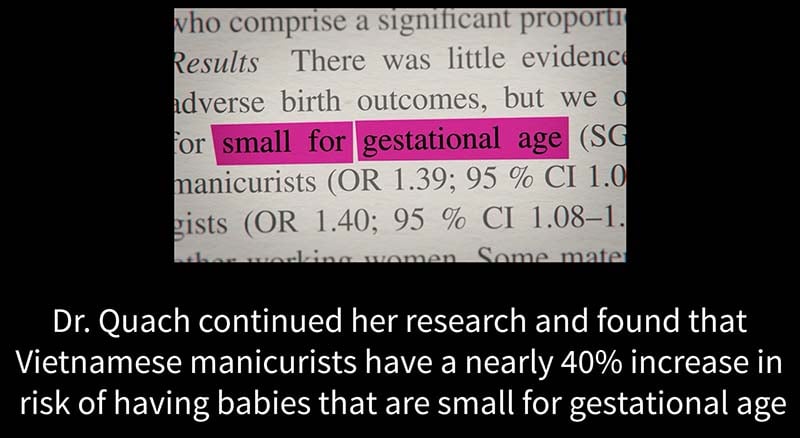
But if you look at the paper they show, you can see the rest of the paragraph they’ve cropped out – it actually starts with “There was little evidence of increased risk for adverse birth outcomes”.

Babies small for gestational age is one of the few issues that’s been linked to working in nail salons.
But the documentary mentions all sorts of health problems – miscarriages, birth defects, breast cancer. It lumps all of these together, generalising them like they all have the same amount of evidence.
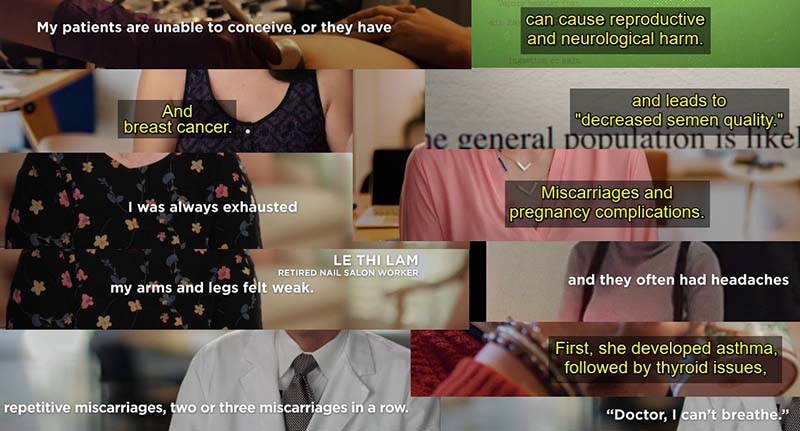
They also don’t mention that one of Dr Quach’s other studies found that nail salon workers had a lower rate of cancer than average.
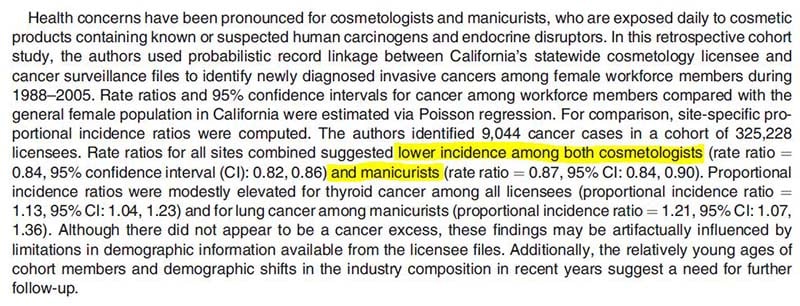
And this isn’t to say that these other health problems aren’t linked to nail salons – my gut feeling is that some more will eventually be linked, there needs to be more research.
But I think it’s really misleading how they make it seem like all these links have already been discovered, by cherry picking half a sentence from one study and only showing us that.
Exposure Is Crucial
So there isn’t much research showing higher rates of these health problems in salon workers. But there is evidence they’re exposed to much higher amounts of potentially harmful substances than average. That’s why I think more health links will be found, and salon workers need more protections. I’m pretty sure most scientists would agree.
But the problem Not So Pretty has is that it really clings to clean beauty logic: that ingredients can be neatly divided into good and bad, and once you take out the bad, “toxic” ingredients, nail salon workers won’t have any more health problems.
This just isn’t how it works.
How dangerous an ingredient is depends on how you’re exposed to it. The most important issue is dose. If you’re exposed to more of something, you’re more likely to be harmed by it. And if you have enough of a relatively safe thing, it can still be harmful. This is commonly referred to as “the dose makes the poison”.
Related post: Clean Beauty Is Wrong and Won’t Give Us Safer Products
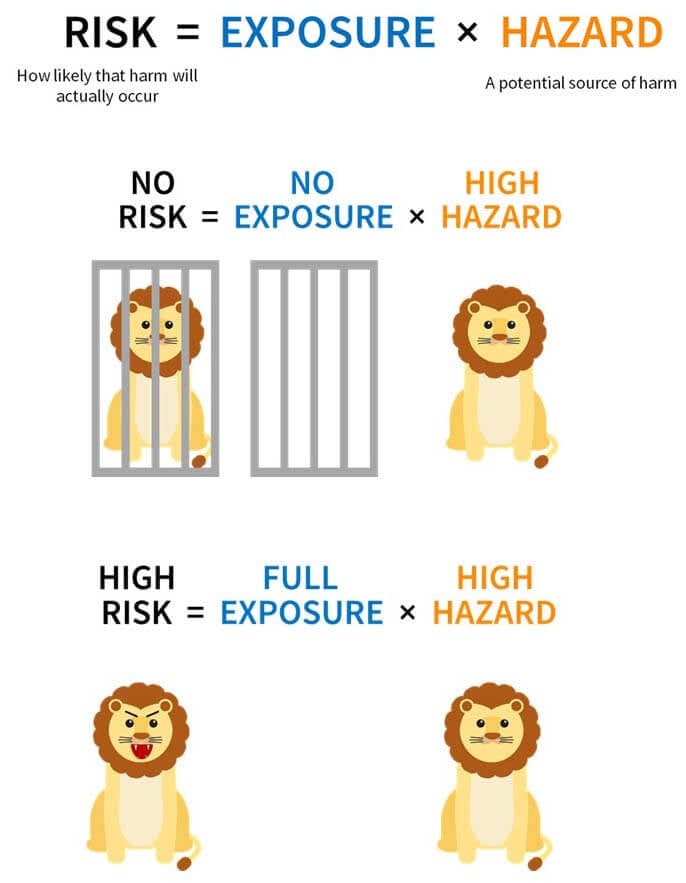
And this episode of Not So Pretty actually shows how ignoring exposure is a massive problem.
There’s this kind of hilarious moment where they dismiss a nail scientist talking about how exposure is important:
Doug: Just because something could cause cancer does not mean it will cause cancer. First, exposure must be high enough, and exposure must occur for long enough, or cancer’s a pretty unlikely outcome.
Palmer: Hmm. Should we take the word of this paid industry spokesman? Let’s see what the science has to say.
And then they cut to Dr Lupita Montoya, an aerosol scientist, and talk about her research on nail salons… which is all about measuring exposure.
Like, there is zero point doing the work she’s done – measuring the levels of different gases in nail salons – if you don’t think the amount matters.
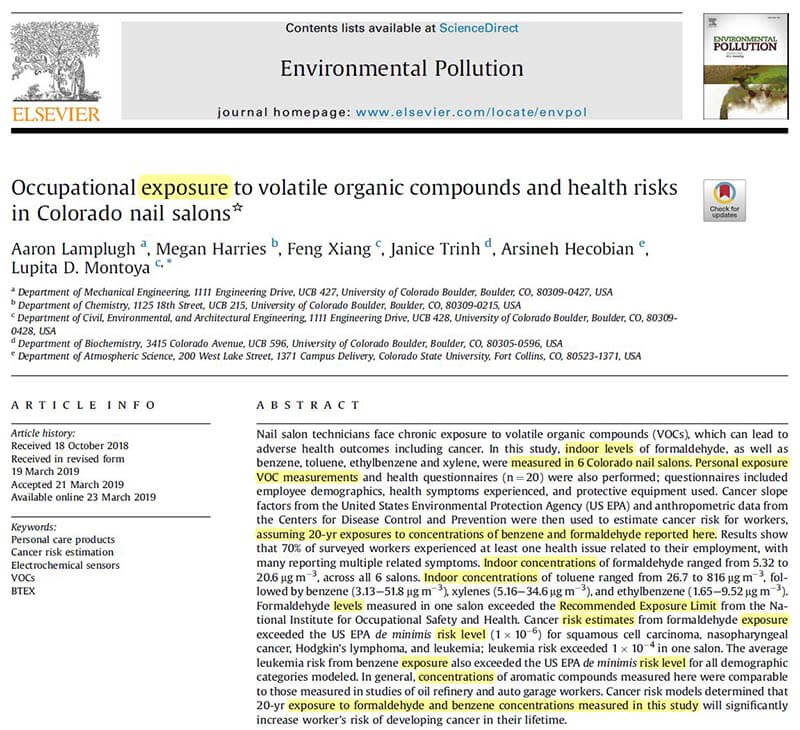
And the documentary actually says it one minute later:
Palmer: Dr. Montoya measured the levels of chemicals in the air in nail salons. She found that nail workers were regularly exposed to chemicals at levels that would “significantly increase the worker’s risk of developing cancer in their lifetime.”
So it’s all about the levels. But then after talking about this, the documentary goes straight back to ignoring exposure again:
Palmer: Both salon workers and their customers are breathing these chemicals, and it’s been reported in the media that nail products have other hidden risks for consumers.
Which is really silly – a salon worker breathing fumes 8 hours a day, most days of the week will have so much more exposure, and very different health impacts compared to someone getting a weekly manicure. Making the two situations sound the same is really ridiculous.
I think we all know this – if you smell strong paint fumes for too long you get a headache, if there’s less or if it’s a short amount of time you’re fine. That’s why Dr Montoya calculated that salon workers could have a higher risk of cancer than average, that’s why Dr Quach was looking for differences between salon workers and other people.


But making it seem like the risk is the same is very handy because
“Salon workers are getting exposed to harmful amounts of chemicals”
Is not going to go as viral as
“All of us are getting cancer from our nail polish”
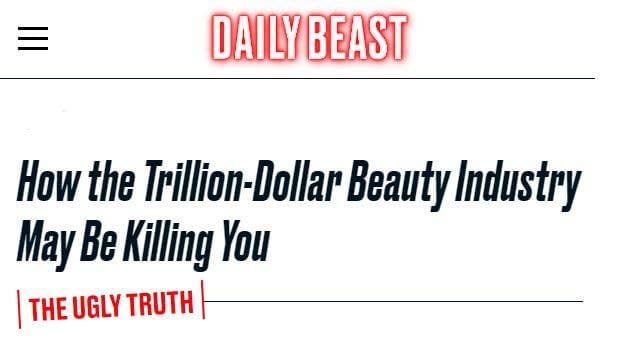
Clean Beauty Doesn’t Fix the Problems
So as you’d expect from how they keep forgetting exposure is a thing, and their giant list of Clean Beauty partners, their solution to all of these issues is Clean Beauty – take out the “toxic” ingredients from products.
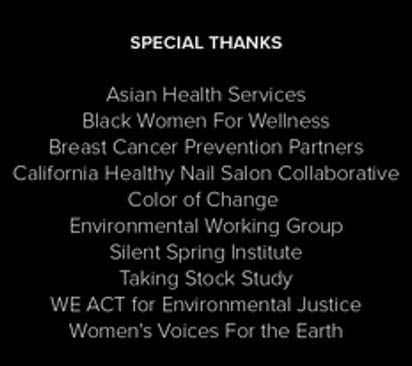
Every episode ends with a list of “dos and don’ts”. This time, they tell us to:
- avoid specific ingredients in nail polish
- tell our salon to avoid them too
- keep getting our nails done, and
- ask politicians to pass laws that mostly just take specific ingredients out of products (the laws were partly designed by their clean beauty partners).
And this is super frustrating, because removing the ingredients they list isn’t going to solve a lot of the issues. (I’ll probably do a video going into these 10-free nail polish lists at some point, because I read so much BS while researching this.)
They list 16 different ingredient groups to avoid:
- Dibutyl phthalate
- Toluene
- Formaldehyde (Paraformaldehyde / Methylene glycol)
- Formaldehyde resin
- Camphor
- Xylene
- Parabens (isobutylparaben, isopropylparaben)
- TPHP
- Ethyl tosylamide
- Tert-butyl hydroperoxide
- Diethylhexyl phthalate (DEHP)
- Quaternium-15
- Mercury
- m-Phenylenediamine and salts
- o-Phenylenediamine and salts
- PFAS
If we focus specifically on safety of salon workers…
- 7 don’t have a function in nail polish (prabens, tert-butyl hydroperoxide, quaternium-15, mercury, m-Phenylenediamine, o-Phenylenediamine, PFAS)
- 2 don’t really have any serious health impacts apart from potential skin irritation (camphor, ethyl tosylamide)
- TPHP isn’t inhaled, it absorbs through skin, so it’s not a big issue if you’re doing someone else’s nails.
So there are only 6 that are somewhat relevant:
There’s evidence that dibutyl phthalate, toluene and xylene are probably not that great for you if you have too much. But they haven’t been in the vast majority of nail polishes for a long time.
Xylene hasn’t been in nail polishes since the 90s. I tried to buy a nail polish with dibutyl phthalate and toluene listed on the label back in 2012, when I used to be a nail blogger (check out my nail art) and they weren’t even in the $2 bargain bin polishes – I had to go on eBay.
Salons could be buying salon-only products that have these – the fact that salon products don’t always disclose their ingredients is actually a legitimate issue that the documentary raises.
Formaldehyde is a serious problem for salon workers, but it’s in disinfectant, nail hardeners, gels and acrylics, not usually nail polish, and it comes from non-nail things too like furniture and indoor furnishings.
Formaldehyde resin sometimes has leftover unreacted formaldehyde in it, but it has a lot less, so it’s mostly a problem for people who are allergic to formaldehyde, if they get nail polish on their skin.
DEHP isn’t absorbed through skin, it’s mostly an issue if you eat it – salon workers aren’t licking people’s fingernails, unless it’s a very special sort of salon. But maybe tiny amounts inhaled over a very long time could be an issue.
So the hit rate of their list here isn’t looking great.
But more importantly, this Clean Beauty approach of banning ingredients misses a lot of known problems.
First off, in Dr Montoya’s study that they showed, there were similar levels of benzene and formaldehyde in a “non-toxic” salon as other salons.

It could be because nail polishes, especially from smaller brands, sometimes have ingredients in them that aren’t on the label. It’s already illegal to have an incorrect ingredients list, but as I mentioned for episode 1, the problem usually isn’t that there aren’t laws, it’s that there aren’t enough resources to monitor products and enforce the laws that are already there (this is a issue in all regions).

It could also be that furniture, carpets, building materials are releasing chemicals like formaldehyde – the levels they measured in salons have also been measured in homes and preschools.


The study also found methyl methacrylate in Colorado nail salons, even though it’s been banned there. MMA is an ingredient used in acrylic nails, and it turns out some salon workers were requesting it over the safer alternative because it was easier to apply.
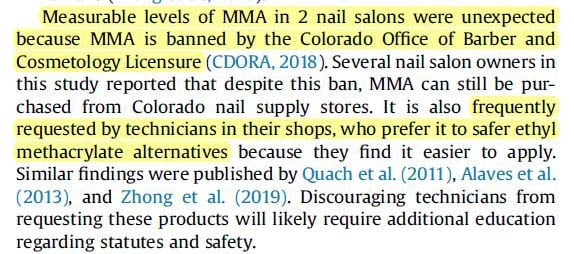
Let me just repeat – this information is all from the study they showed us in this episode.
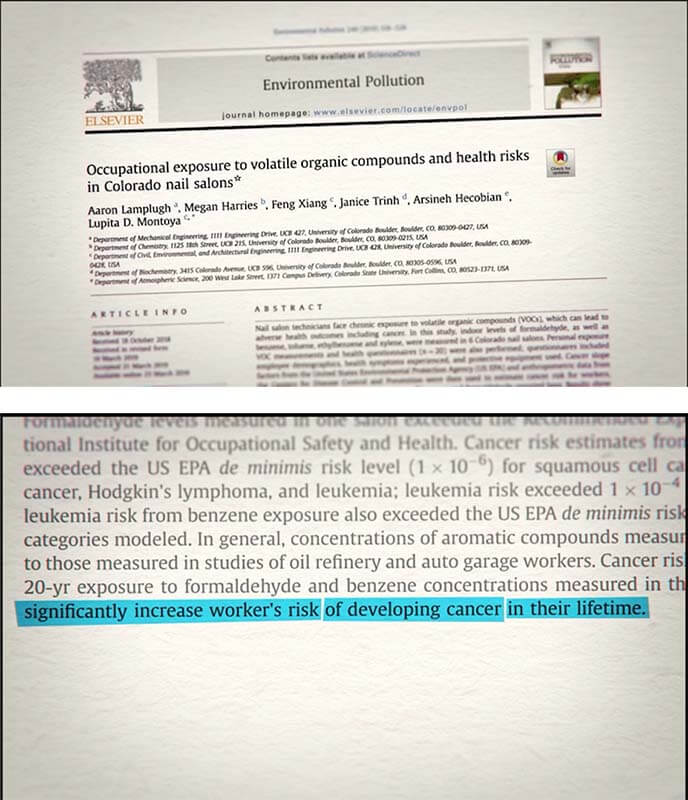
Secondly, even substances that are relatively “safe” can still be nasty if you’re breathing in lots of it all the time.
For example, acetone is in lots of nail polish removers, and isn’t on any of “dirty” lists – you actually make it inside your body.


But if you breathe in a lot for a long time, it’s linked to some of the health issues they mentioned in the documentary, like headaches, dizziness and breathing problems.
And there are a whole bunch of “clean” ingredients like this – 8 out of the 12 chemicals listed as hazardous for nail salon workers by OSHA (US government organisation) aren’t included on Not So Pretty‘s ban list.
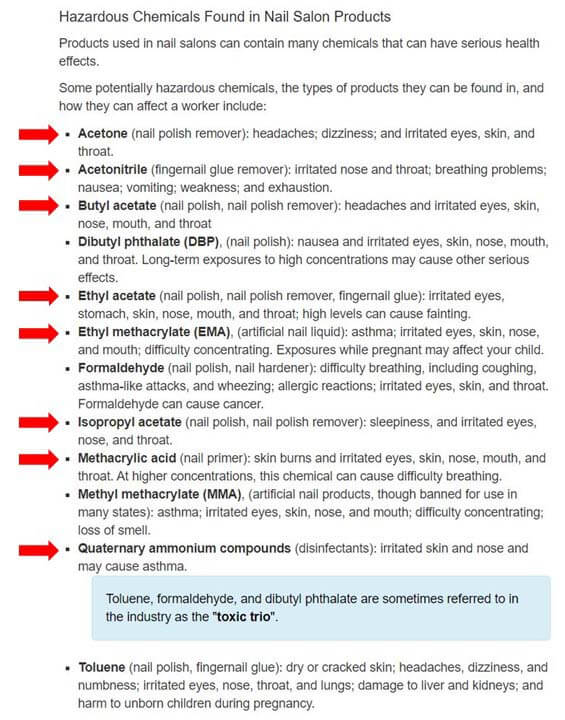
Ignoring the obvious solution
And maybe the most bizarre thing is that there is actually a solution that solves a lot of these issues. And the documentary barely mentions it: cleaning the air inside nail salons.
If you actually look at the studies on nail salon workers, some of them do suggest taking specific ingredients out of products. But practically all of them say to tackle the air, since the main problem is that workers are breathing in high levels of lots of chemicals.
The most obvious method is to improve ventilation. Having better airflow will dilute all of the harmful chemicals that salon workers are breathing in. This includes “dirty” ingredients in the nail products, but also “safe” ingredients at harmful levels, chemicals coming from the furniture and the building, ingredients that aren’t listed on the labels, and ingredients that haven’t been researched enough yet.
There are laws in some states that require a certain level of ventilation, although they can be a bit vague and enforcement is, as always, a bit spotty.
It’s also a requirement to be recognised as a Healthy Nail Salon in California, an initiative that was started by some of the activists they featured.
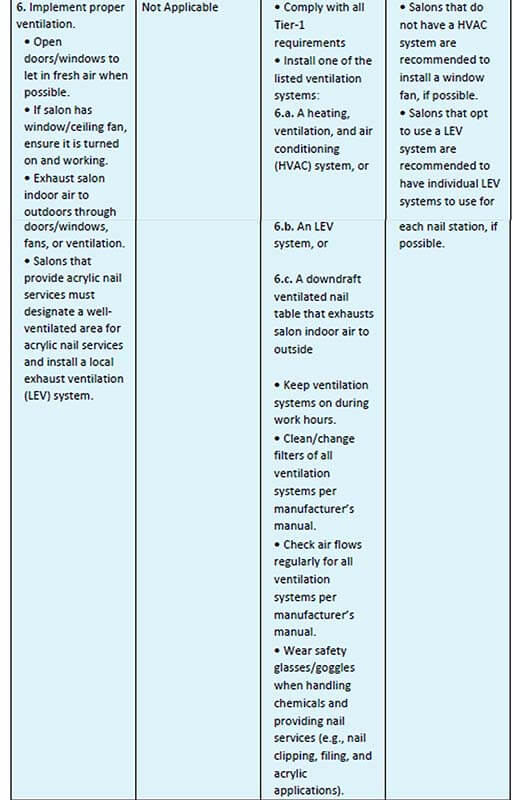
But ventilation isn’t mentioned in their do’s and don’ts – maybe it’s buried deep in the Safer Beauty Bills Package, but even the act that’s meant to protect salon workers is all about specific chemicals. It does make manufacturers add ingredient lists to salon products and translate safety data to other languages – which is good, but still doesn’t tackle a lot of these issues.
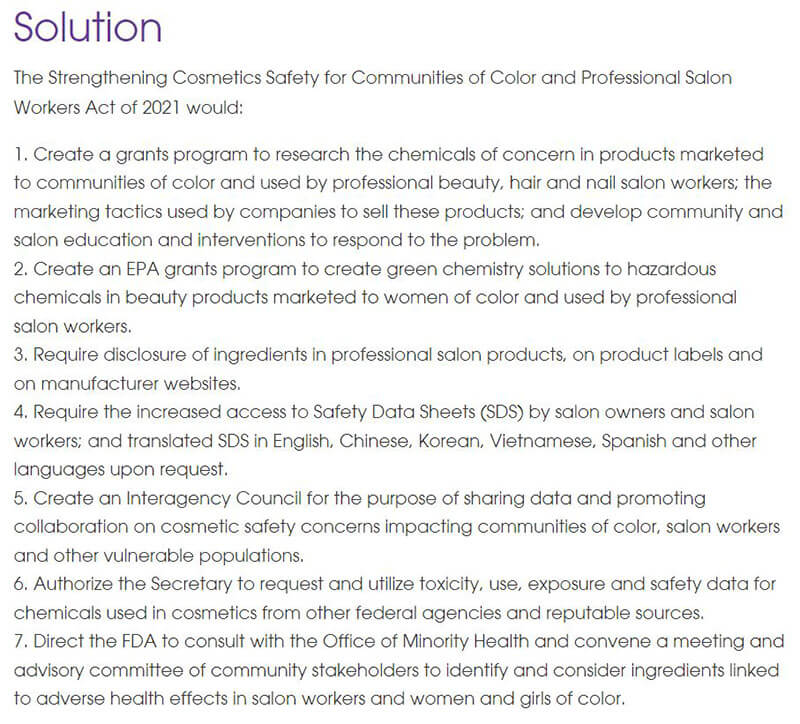
And ventilation does come up a few times in this episode, but they kind of just brush past it:
Palmer: News reports have covered workers speaking out for better working conditions, demanding better ventilation, PPE equipment, and a $15-an-hour minimum wage.
And one action item they could’ve easily added would be to ask your salon to look at the Healthy Nail Salon guidelines and put them in place. People who contributed to these guidelines are featured in this episode.
These guidelines are pretty detailed, they have sections on ventilation and protective equipment – and they do have a list of ingredients not to use. But they take into account exposure – for example, ethyl acetate, which is “clean” can’t be used for removing nail polish, where workers would breathe more in, but it can be used in nail polishes.
And I’m also wondering why something like a nationwide Healthy Salons Program didn’t make it into the Safer Beauty Bills Package.
So it really just seems like this series (and their partners) really go out of their way to promote clean beauty, to the point where they purposely ignore the things the people they feature recommend, and just focus on clean vs dirty ingredients.
I’ll be looking at Episode 3 on Skincare soon – check out my breakdown of Episode 1 if you haven’t already.
References
National Academies of Sciences, Engineering, and Medicine; Policy and Global Affairs; Committee on Women in Science, Engineering, and Medicine; Committee on Improving the Representation of Women and Underrepresented Minorities in Clinical Trials and Research; Bibbins-Domingo K, Helman A, editors. Improving Representation in Clinical Trials and Research: Building Research Equity for Women and Underrepresented Groups. Washington (DC): National Academies Press (US); 2022 May 17. 10.17226/26479
Quach, T., Von Behren, J., Goldberg, D. et al. Adverse birth outcomes and maternal complications in licensed cosmetologists and manicurists in California. Int Arch Occup Environ Health 88, 823–833 (2015). DOI: 10.1007/s00420-014-1011-0
Quach T, Doan-Billing PA, Layefsky M, et al. Cancer incidence in female cosmetologists and manicurists in California, 1988-2005. Am J Epidemiol. 2010;172(6):691-699. DOI: 10.1093/aje/kwq190
Lamplugh A, Harries M, Xiang F, Trinh J, Hecobian A, Montoya LD. Occupational exposure to volatile organic compounds and health risks in Colorado nail salons. Environ Pollut. 2019;249:518-526. DOI:10.1016/j.envpol.2019.03.086
Healthy Nail Salon Recognition Program Guidelines STATE of CALIFORNIA ENVIRONMENTAL PROTECTION AGENCY DEPARTMENT of TOXIC SUBSTANCES CONTROL.; 2018. Accessed July 23, 2022. https://dtsc.ca.gov/wp-content/uploads/sites/31/2018/10/AB2125-HNSR-Program-Guidelines.pdf


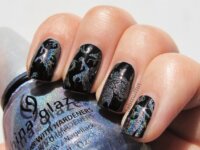
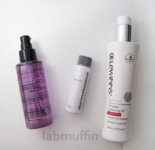
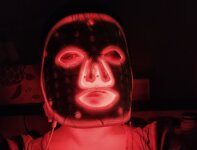
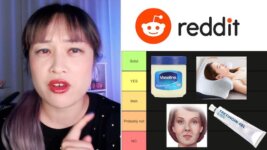
Just thank you for this detailed and non biased analysis 🙏